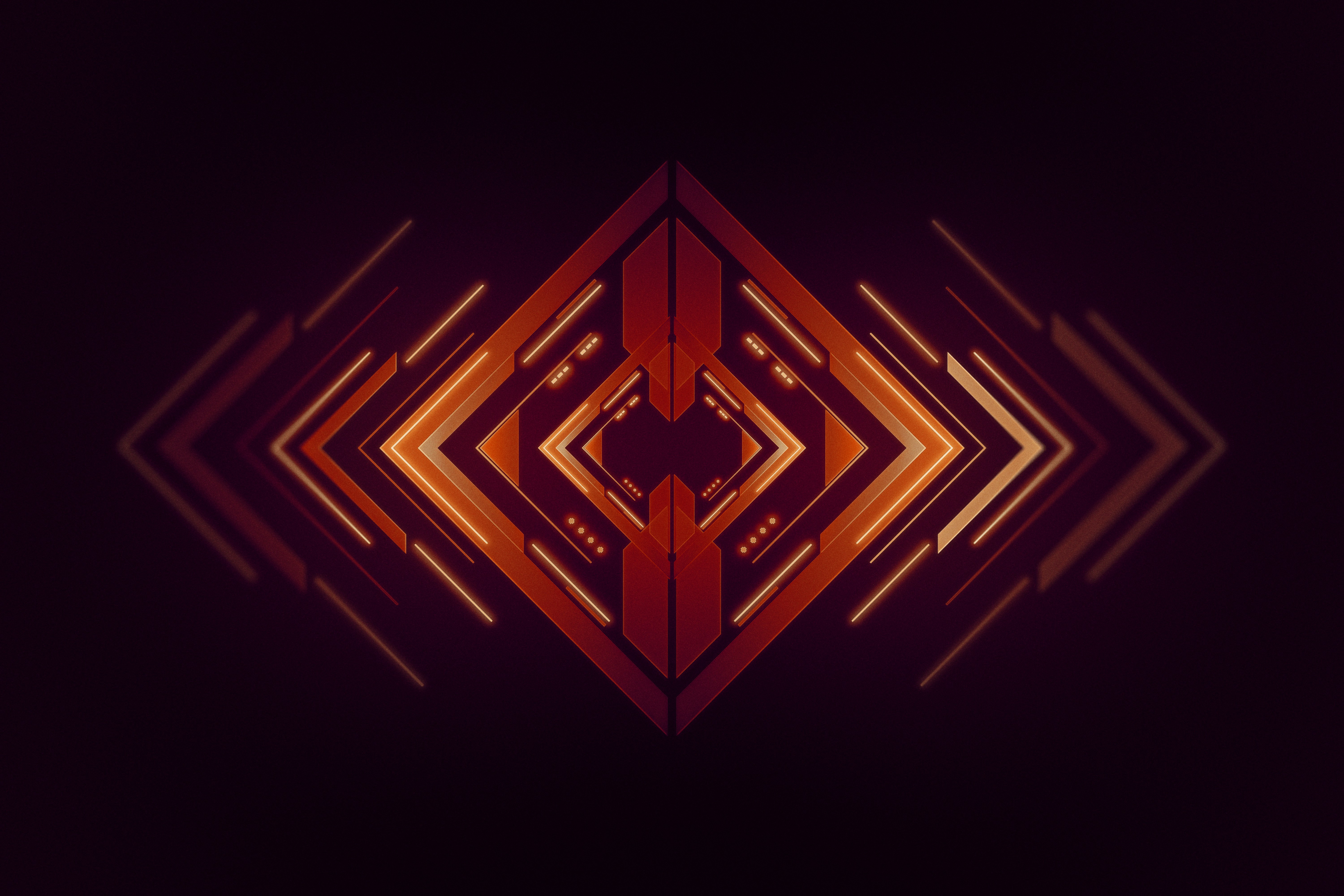
Edge Computing vs. Fog Computing vs. Cloud Computing Jobs: Which Path Should You Choose?
With the exponential growth of the Internet of Things (IoT), 5G networks, and real-time data applications, Edge Computing has emerged as a revolutionary approach to processing data closer to the source. By reducing latency and bandwidth usage, edge computing enables a host of new use cases—from autonomous vehicles to industrial automation—while powering data-driven insights on the spot.
If you’ve been exploring Edge Computing jobs on www.edgecomputingjobs.co.uk, you might also have seen positions mentioning Fog Computing and Cloud Computing. While these terms sometimes overlap or are used interchangeably, each has a distinct focus and plays a unique role in distributed computing architectures. So how do Edge, Fog, and Cloud really differ? And which career path is best suited to your skill set and interests?
This comprehensive guide demystifies the three domains, outlining their core concepts, typical responsibilities, overlapping vs. distinctive skill sets, salary ranges, and real-world examples. By the end, you’ll have a clearer understanding of where you can thrive—whether you’re drawn to the cutting-edge world of real-time edge analytics, the network-level orchestration of fog computing, or the centralised, high-scale infrastructure of the cloud.
1. Defining the Fields
1.1 What is Edge Computing?
Edge Computing involves processing data at or near its source—in devices, sensors, or local computing nodes—instead of sending it all to a centralised data centre or cloud. By doing so, it reduces network latency and bandwidth constraints, enabling faster decisions and real-time responsiveness. This architectural style is particularly vital for mission-critical systems (e.g., autonomous vehicles) and industrial IoT environments where split-second analysis can mean the difference between system uptime and costly downtime.
Key aspects of Edge Computing include:
Decentralised Processing: Local computation on gateways, micro data centres, or smart devices themselves.
Latency Reduction: Critical for applications needing real-time or near-real-time responsiveness (robotics, remote surgery, AR/VR).
Resilience & Efficiency: Minimising data transfer helps avoid cloud network bottlenecks and ensures robust operation even if the cloud connection is intermittent.
Professions in Edge Computing can range from Edge Software Engineers optimising on-device applications, to Edge Infrastructure Architects designing localised mini data centres, to IoT Specialists implementing sensor networks. These roles demand a fusion of hardware knowledge, software optimisation, networking, and security skills in distributed architectures.
1.2 What is Fog Computing?
Fog Computing—sometimes referred to as “fogging”—is an intermediary layer between edge devices and the cloud. Coined by Cisco, the concept emphasises distributing computing, storage, and network resources more comprehensively throughout the network, not just at the outermost “edge” or in a single remote cloud environment.
Key focuses of Fog Computing:
Network Proximity: Data is partially processed within intermediate nodes (routers, gateways, local servers) before reaching the cloud.
Hierarchical Architecture: Fog nodes collect or aggregate data from edge devices, enabling local analytics or pre-processing prior to sending results upstream.
Scalability & Resource Allocation: Fog computing uses orchestration layers that coordinate multiple nodes, balancing workloads across the network.
Professionals in Fog Computing might specialise in Network Orchestration, Fog Node Administration, or Microservices that run across distributed environments. They often collaborate with edge computing teams (for on-device optimisation) and cloud teams (for higher-level analytics or storage).
1.3 What is Cloud Computing?
Cloud Computing centralises computing resources in large-scale data centres managed by providers like AWS, Microsoft Azure, or Google Cloud. In a cloud-centric architecture, data from various devices or applications is sent to the cloud for storage, processing, and analytics, leveraging virtually unlimited compute and storage resources on demand.
Core advantages of the cloud model include:
On-Demand Scalability: Organisations can quickly scale services without owning or maintaining hardware.
Cost Efficiency: Pay-as-you-go models reduce capital expenditure and simplify resource management.
Global Reach: Data centres worldwide enable low-latency access for different regions.
Common roles in Cloud Computing range from Solutions Architects designing multi-tier applications on AWS or Azure, to Cloud Security Engineers ensuring data protection at scale, to DevOps/Platform Engineers building continuous integration and deployment pipelines in the cloud.
While Edge, Fog, and Cloud each address data processing at different points in a network, many modern architectures use them in tandem—leveraging the low latency of edge devices, the aggregation of fog nodes, and the robust storage/compute power of the cloud.
2. Overlapping vs. Distinctive Skill Sets
Despite their varying locations in the network, Edge Computing, Fog Computing, and Cloud Computing share common ground while emphasising distinct specialities.
2.1 Overlapping Skills
Networking & Protocols:
Understanding TCP/IP, routing, VLANs, or software-defined networking (SDN) is crucial for all three domains.
Familiarity with IoT protocols (MQTT, CoAP) can apply across edge and fog solutions.
Distributed Systems Knowledge:
Designing, deploying, and managing applications across multiple nodes—whether edge devices, fog gateways, or cloud servers—requires awareness of concurrency, scaling, and failure handling.
Containerisation & Orchestration:
Tools like Docker and Kubernetes are relevant to each environment. Edge nodes increasingly adopt lightweight container solutions for simpler deployment; fog computing orchestrates nodes in a mid-tier; cloud environments rely heavily on Kubernetes or serverless architectures.
Security & Compliance:
Each domain faces unique security challenges. Edge devices, for instance, can be physically accessed by unauthorised individuals, whereas cloud data centres face advanced cyber threats.
Professionals in all roles must incorporate encryption, authentication, and robust monitoring to safeguard data and ensure compliance (GDPR, ISO 27001, etc.).
Automation & DevOps Mindset:
Continuous integration/continuous deployment (CI/CD) pipelines, IaC (Infrastructure as Code), and GitOps practices are increasingly adopted across edge, fog, and cloud environments.
2.2 Distinctive Skills
Edge Computing
Low-Power Hardware & Resource Constraints: Necessitates optimising software for limited CPU, memory, or battery life.
Real-Time Operating Systems (RTOS) & Embedded Development: For edge devices like sensors, robots, or consumer electronics, knowledge of RTOS (e.g., FreeRTOS, VxWorks) is beneficial.
Edge AI & On-Device Processing: Tools like TensorFlow Lite or PyTorch Mobile enable machine learning in resource-constrained devices.
Fog Computing
Network & Middleware Orchestration: Handling data flows across intermediate nodes, possibly requiring specialised frameworks (OpenFog architecture, Cisco IOx).
Hybrid Data Processing: Ability to design partial analytics at local fog nodes while deferring heavier tasks to the cloud, often in a layered pipeline.
Scalability & Coordination: Managing multiple distributed nodes that aggregate or filter data prior to cloud ingestion.
Cloud Computing
Large-Scale Infrastructure: Proficiency with virtual machines, container orchestration, serverless functions, load balancers, and multi-region deployments.
Cloud Services & APIs: Familiarity with AWS, Azure, or Google Cloud ecosystems (e.g., AWS Lambda, Azure Functions, Google BigQuery) for advanced analytics, data warehousing, or managed databases.
Cost Optimisation & Governance: Ensuring efficient resource use, monitoring usage, setting up budgets, and adhering to best practices for security and compliance at scale.
3. Typical Job Titles and Responsibilities
When searching on www.edgecomputingjobs.co.uk, you may encounter a range of positions referencing edge, fog, or cloud. Below are some common titles and high-level descriptions.
3.1 Edge Computing Roles
Edge Software Engineer
Focus: Developing applications to run on resource-constrained edge devices, often requiring local data processing or AI inference.
Responsibilities: Firmware updates, containerising edge apps, implementing local analytics, collaborating with hardware teams.
IoT Edge Architect
Focus: Designing overall edge architectures, integrating sensors, gateways, and local compute nodes with upper-level systems.
Responsibilities: Selecting appropriate protocols, ensuring low-latency data flow, orchestrating updates, ensuring reliability.
Edge Security Specialist
Focus: Protecting edge devices against tampering, attacks, and data breaches.
Responsibilities: Implementing secure boot processes, encryption, intrusion detection, firmware validation, and remote patch management.
3.2 Fog Computing Roles
Fog Platform Engineer
Focus: Building and maintaining middleware or orchestration layers that manage a fleet of fog nodes.
Responsibilities: Deploying microservices to intermediate gateways, load balancing between nodes, integrating with edge analytics, bridging to cloud APIs.
Network Orchestration Specialist
Focus: Configuring the network infrastructure and ensuring data flows efficiently from edge nodes through fog layers to the cloud.
Responsibilities: Monitoring network traffic, ensuring QoS (Quality of Service), fault tolerance, and dynamic routing for real-time applications.
Fog Data Engineer
Focus: Designing data processing pipelines that partially process or aggregate data at the fog layer.
Responsibilities: Developing transformations or filters to reduce data volume, securing local data stores, interfacing with cloud analytics platforms.
3.3 Cloud Computing Roles
Cloud Solutions Architect
Focus: Crafting end-to-end architectures using cloud-native services for compute, storage, analytics, and security.
Responsibilities: Selecting the right services (e.g., AWS EC2 vs. Lambda, Azure VM vs. Functions), designing DR (disaster recovery) strategies, cost monitoring, and performance optimisation.
Cloud DevOps Engineer
Focus: Automating deployments, building CI/CD pipelines, and ensuring high availability of services in the cloud.
Responsibilities: Writing Infrastructure as Code (Terraform, AWS CloudFormation), containerising applications, setting up monitoring (Prometheus, Grafana).
Cloud Security Engineer
Focus: Protecting cloud infrastructure against threats, ensuring compliance with industry standards.
Responsibilities: Implementing identity and access management (IAM), encryption protocols, intrusion detection, vulnerability scanning, and incident response procedures.
4. Salary Ranges and Demand
Demand for edge, fog, and cloud professionals continues to rise across Europe, including the UK. Salaries vary by region, industry, and experience level. Here are approximate UK-based ranges:
4.1 Edge Computing Roles
Edge Software Engineer
Entry-level: £35,000–£50,000
Mid-level: £50,000–£75,000
Senior/Lead: £75,000–£100,000+
IoT Edge Architect
Range: £60,000–£110,000+
Senior architects commanding higher salaries often have expertise in embedded systems and enterprise IoT deployments.
Edge Security Specialist
Range: £60,000–£100,000+
Advanced security certifications or domain-specific knowledge (medical devices, automotive) can push salaries beyond this range.
4.2 Fog Computing Roles
Fog Platform Engineer
Entry-level: £40,000–£55,000
Mid-level: £55,000–£75,000
Senior/Architect: £75,000–£100,000+
Network Orchestration Specialist
Range: £45,000–£90,000+
Roles requiring advanced SDN or NFV (Network Functions Virtualization) knowledge can reach the top of this band.
Fog Data Engineer
Range: £50,000–£90,000+
Senior positions in industrial or large-scale IoT contexts may exceed £100,000.
4.3 Cloud Computing Roles
Cloud Solutions Architect
Entry-level: £45,000–£60,000
Mid-level: £60,000–£90,000
Senior/Lead: £90,000–£130,000+ (particularly with multi-cloud experience)
Cloud DevOps Engineer
Range: £50,000–£100,000+
Senior roles focusing on large-scale, mission-critical systems can command six-figure salaries.
Cloud Security Engineer
Range: £60,000–£110,000+
Specialist roles in finance, healthcare, or government often provide higher compensation due to stringent compliance requirements.
5. Real-World Examples
5.1 Edge Computing in Action
Autonomous VehiclesSelf-driving cars must process sensor data—LiDAR, cameras, radar—in real-time to avoid collisions. An Edge Software Engineer implements on-vehicle AI models capable of object detection and path planning. Offloading data to the cloud for every single calculation is impossible due to latency constraints.
Smart FactoriesIn Industry 4.0 manufacturing lines, local edge gateways monitor machine performance, generating alerts if anomalies suggest an impending failure. This real-time data analysis prevents downtime, saving thousands in lost productivity.
5.2 Fog Computing in Action
Smart City Traffic ManagementA city deploys fog nodes at intersections to aggregate data from traffic signals, sensors, and cameras. The fog layer performs immediate congestion analysis, adjusting signal timings accordingly, while summarised data is sent to the cloud for historical and predictive analytics.
Healthcare TelemetryA healthcare network uses fog computing on local servers in hospitals. Patient vitals from wearables or bedside devices feed into on-premises fog nodes, enabling immediate response if irregularities are detected. Aggregated records then flow securely to the cloud for advanced analytics and long-term storage.
5.3 Cloud Computing in Action
E-Commerce PlatformA global retailer builds its infrastructure on AWS for elasticity, ensuring that traffic spikes (e.g., Black Friday) are handled seamlessly. A Cloud DevOps Engineer automates deployments of microservices using Kubernetes and monitors costs, scaling resources down when traffic returns to normal.
Big Data AnalyticsA fintech company ingests billions of transactions daily into a data lake on Azure. They employ serverless Spark jobs to run fraud detection algorithms. The cloud’s virtually limitless storage and compute elasticity allow the firm to scale analytics workloads on demand.
6. Which Path Should You Choose?
Each of these domains—Edge, Fog, and Cloud—offers unique challenges and career opportunities. Your ideal path depends on your interests, technical strengths, and desired impact:
Edge Computing
Appeals to those who love real-time systems, embedded hardware, and near-device analytics.
You’ll excel if you’re comfortable with low-level coding, resource optimisation, and possibly working with hardware constraints (RTOS, embedded boards).
Career progression can lead to roles as an IoT Architect, Edge AI Specialist, or even an R&D lead for autonomous or real-time systems.
Fog Computing
Appeals to network-savvy individuals who enjoy orchestrating mid-layer infrastructure, bridging edge devices and the cloud.
You’ll excel if you thrive on designing distributed architectures, configuring networking topologies, and ensuring data flows are optimally managed.
Career progression might include transitioning to advanced network engineering, IoT platform leadership, or solutions architecture spanning edge-to-cloud.
Cloud Computing
Appeals to those drawn to large-scale infrastructure, high-level services, automation, and robust data analytics platforms.
You’ll excel if you enjoy working with AWS/Azure/GCP, coding serverless functions, or implementing data warehousing.
Career progression includes specialising in areas like cloud security, data warehousing, container orchestration, or multi-cloud strategies.
In many real-world scenarios, organisations rely on hybrid or multi-layer approaches, with edge devices handling local analytics, fog nodes managing aggregation, and cloud platforms providing advanced analytics and storage. This means the boundaries can blur, and many professionals gain exposure to multiple layers as part of a larger architecture.
7. Tips for Breaking Into Your Chosen Field
Regardless of whether you pursue edge, fog, or cloud roles, certain strategies can accelerate your entry:
Build Practical Skills & Projects
Edge: Experiment with devices like Raspberry Pi, NVIDIA Jetson, or Arduino, setting up local data processing or AI inference at home.
Fog: Practice with real or simulated networks, exploring frameworks like Cisco IOx or building simple “fog” setups that aggregate data from multiple sensors or devices.
Cloud: Take advantage of free tiers offered by AWS, Azure, or GCP. Deploy small-scale apps, experiment with serverless computing, or create a CI/CD pipeline.
Pursue Relevant Certifications
Edge: While official “edge computing” certifications are limited, you can strengthen your profile with IoT-specific badges (e.g., AWS Certified IoT, Azure IoT Developer) or embedded system courses.
Fog: Focus on advanced networking (Cisco CCNP, SDN certifications) plus container orchestration or HPC (High-Performance Computing) classes.
Cloud: AWS Solutions Architect, Azure Administrator, Google Professional Cloud Architect, or DevOps Engineer certifications showcase cloud proficiency to employers.
Leverage Online Courses & Community Resources
Platforms like Coursera, edX, and Udemy offer specialisations in IoT, edge AI, multi-cloud deployment, or advanced networking.
Online communities (GitHub, Reddit, LinkedIn groups) or local meetups can help you find mentors, share ideas, and stay current on best practices.
Gain Hands-On Industry Exposure
Internships/Apprenticeships: Seek roles that let you tinker with physical devices, networking gear, or cloud platforms.
Hackathons: Many IoT and cloud hackathons let you build prototypes in just a few days, expanding your portfolio and connecting you with peers.
Stay Curious & Adaptive
The edge/fog/cloud ecosystem evolves rapidly. Keep an eye on trends like 5G, container edge orchestration (K3s, MicroK8s), or AI at the edge.
Don’t be afraid to pivot or learn new tools that help you orchestrate distributed architectures from device to data centre.
Highlight Transferable Skills
If you come from a background in embedded systems, you may already have an advantage in edge roles.
Networking experts can pivot into fog computing.
Software developers used to microservices can thrive in cloud DevOps roles.
8. Conclusion
As the volume of data explodes and low-latency requirements become paramount, Edge Computing, Fog Computing, and Cloud Computing each play pivotal roles in modern distributed architectures. While Edge focuses on real-time decision-making at the data source, Fog provides an intermediate layer for aggregation and partial analytics, and Cloud offers centralised, highly scalable resources for storage, long-term processing, and advanced machine learning.
Which path best suits you depends on your technical interests, whether that’s engineering solutions on embedded devices, orchestrating distributed nodes, or leveraging vast cloud services. Organisations increasingly combine these approaches, meaning that cross-domain expertise can be especially valuable and open doors to advanced architectural or leadership roles.
If you’re excited about tackling real-time challenges, building local AI solutions, or integrating networks of IoT devices, Edge Computing roles may be your calling. If you thrive on designing multi-layer architectures that efficiently shuttle data between edge nodes and cloud data centres, Fog Computing might spark your interest. For those drawn to the scale, automation, and broad service offerings of centralised data centres, Cloud Computing positions are abundant and evolving.
Ready to dive into this dynamic field? Check out www.edgecomputingjobs.co.uk for the latest openings—from IoT Edge Engineers to Cloud-Fog specialists—across diverse industries. With the right combination of hands-on experience, continuous learning, and passion for distributed systems, you’ll be well on your way to shaping the future of computing at every layer of the network.
About the Author:This article aims to clarify the differences among Edge, Fog, and Cloud Computing for professionals navigating the distributed computing landscape. For updated job listings, insights, and resources, visit www.edgecomputingjobs.co.uk and join the innovative field that’s redefining how data is processed, stored, and secured.


